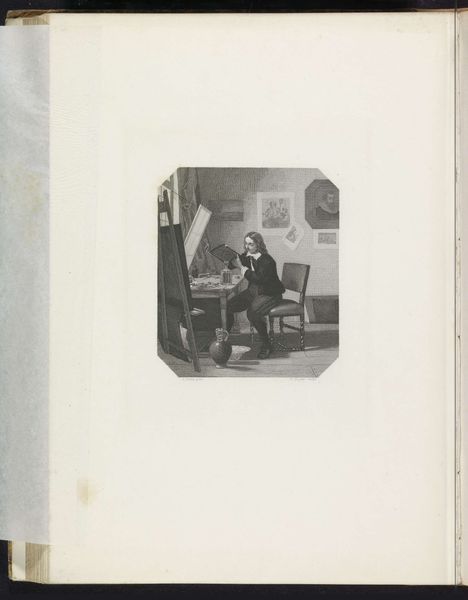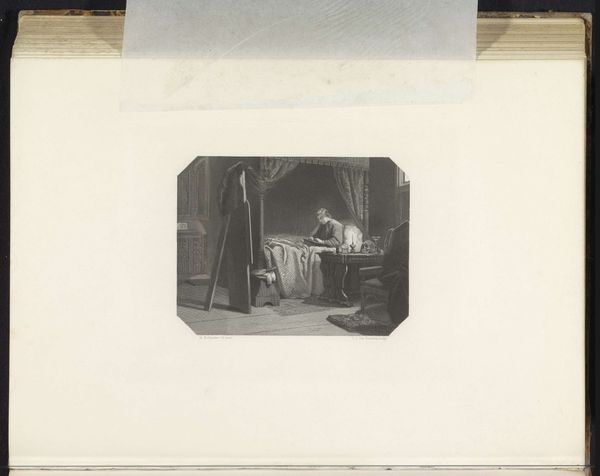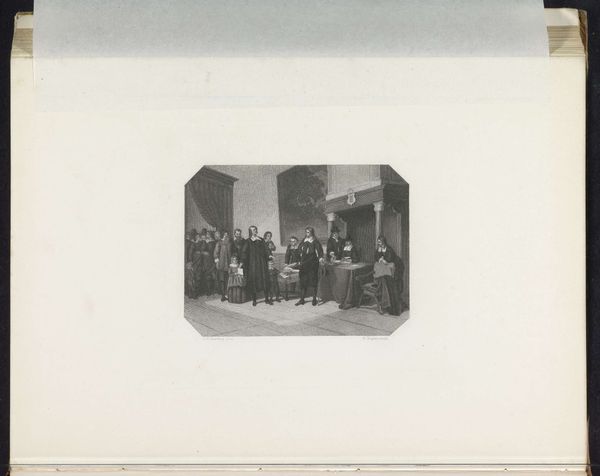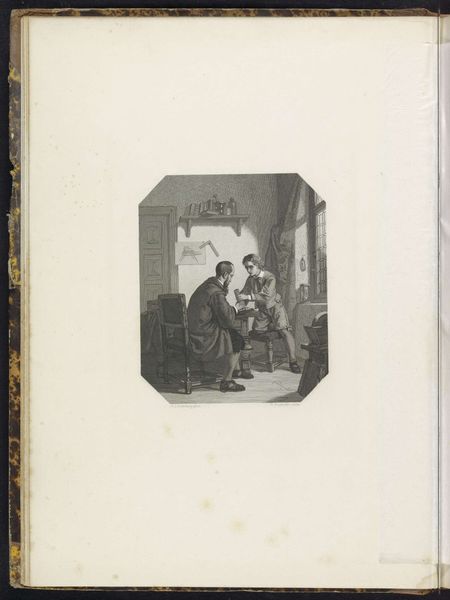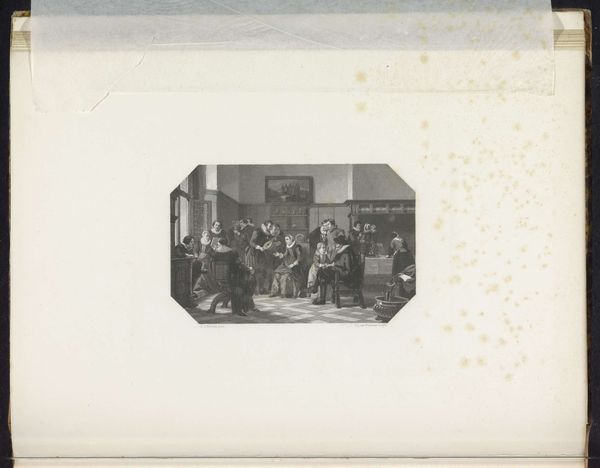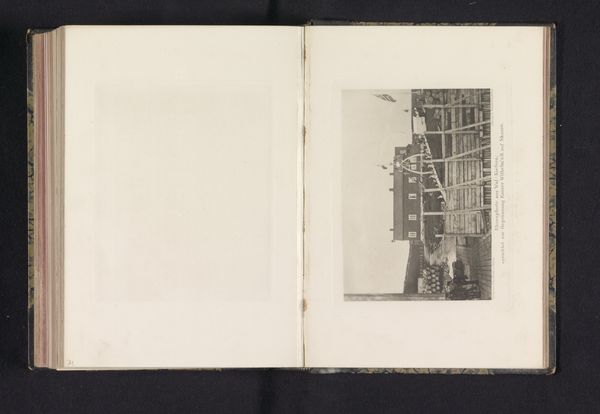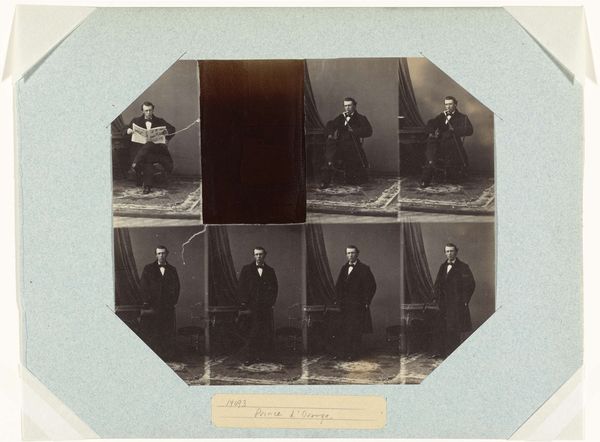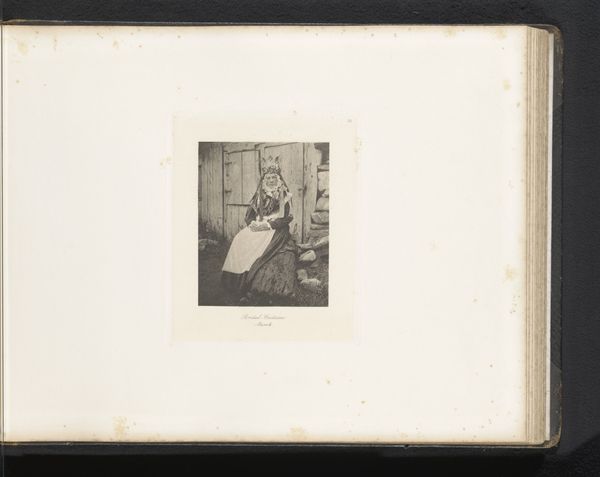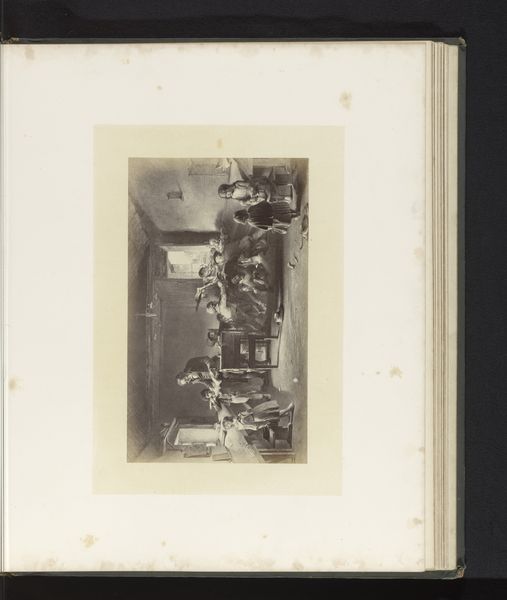
Rembrandt bij de deur naar het anatomisch theater, ca. 1630 1865 - 1870
0:00
0:00
christiaanlodewijkvankesteren
Rijksmuseum
print, engraving
#
portrait
# print
#
charcoal drawing
#
tonal
#
genre-painting
#
history-painting
#
engraving
Dimensions: height 190 mm, width 240 mm
Copyright: Rijks Museum: Open Domain
Curator: Look at the atmospheric light in "Rembrandt bij de deur naar het anatomisch theater, ca. 1630," housed here at the Rijksmuseum. It's rendered in a print made sometime between 1865 and 1870 by Christiaan Lodewijk van Kesteren. Editor: I am immediately struck by the subtle grays achieved in this engraving, which creates a slightly haunting impression, considering the setting of the anatomical theater. Curator: Indeed, consider how Van Kesteren uses line and shadow. An engraving’s effect is so dependent on the hand of the engraver, isn’t it? And look how they convey texture and form simply through varied marks in the metal. This print medium provides access to audiences who can reflect on social and cultural references. Editor: It makes me wonder about access and perception—anatomical theaters were once sites of spectacle and knowledge, carefully managed events. Who do you think Van Kesteren imagined looking at this image? What were the contemporary debates about displaying anatomy, medicine, and death? Curator: Well, history is present here in different ways. Think about what the genre of history painting did for civic and cultural values and how these themes have continued to resonate over time. Also, prints make artworks affordable and widely available, changing who could reflect on these events! Editor: I like how the engraver uses the medium to explore both the objective nature of observation and subjective perception through light and dark tonal details. But you are right; prints played an important role in spreading imagery, even images of science and medicine to the masses. Curator: And isn't the framing crucial here? A snapshot of a specific time, captured and reproduced thanks to material developments and industrial innovation. Editor: Very interesting…reflecting on art and progress reminds us how the medium conditions access, informing cultural discussions and our understanding. Curator: Absolutely, prompting questions about audience, knowledge, and power within that historical context.
Comments
No comments
Be the first to comment and join the conversation on the ultimate creative platform.
